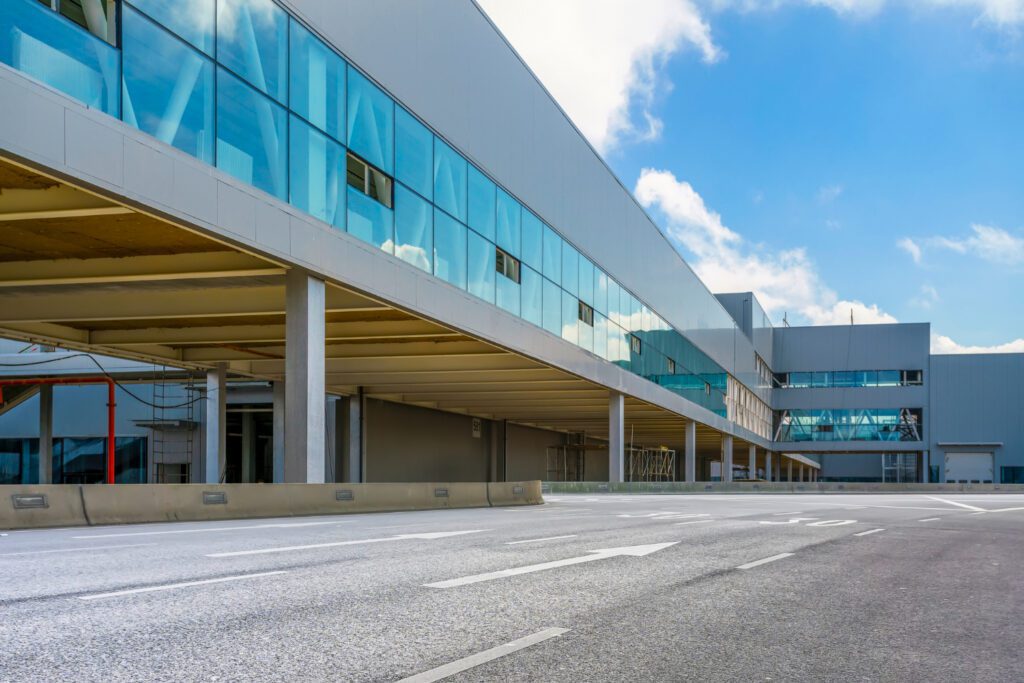Introduction
Commercial building insurance is essential for businesses, offering protection for physical assets against risks such as fire, vandalism, and natural disasters. Estimating a fixed cost for this insurance can be challenging due to various influencing factors. The objective of this blog is to shed light on these factors and guide readers towards obtaining accurate quotes.
Key Factors Affecting Commercial Building Insurance Cost

Property Details
- Size and Age of the Building:
Larger and older buildings often have higher insurance costs due to increased repair and replacement expenses. Insurers assess the risk of structural integrity and the likelihood of claims, which tend to be higher for older structures (e.g. older pipes are more prone to leakage). - Construction Materials and Type:
The materials used in construction and the type of building significantly influence the premium. Fire-resistant materials and standard office spaces generally attract lower premiums, while buildings with flammable materials or unique structures may cost more to insure. Cladding with EPS (Expanded Polystyrene) or where EPS is used for internal insulation (e.g. cool rooms) is also a major risk factor that can increase premiums significantly. - Location:
The geographical location of the building plays a crucial role in determining insurance costs. Properties in areas prone to natural disasters, such as those above the 26th parallel in Australia, are more expensive to insure. For example, a basic $1.0M industrial shed in Victoria might cost around $4,000 per year, while the same building in Cairns could be $20,000 or more due to cyclone risk. Similarly, proximity to rivers with flood risk or bushland with fire risk can also affect premiums.
Business Operations
- Industry Type:
Higher-risk industries, such as manufacturing or chemical processing, often result in higher insurance premiums. The type of tenant business activities also plays a role; for instance, an office risk is cheaper to insure than a tenant with commercial cooking. - Vacancy:
If a building is more than 50% vacant, the cover may be significantly more expensive or require a specialist policy. Insurers view vacant buildings as higher risks due to the potential for vandalism or damage being noted and remedied before it becomes worse. - Value of Business Equipment and Inventory:
While this is generally a concern for tenants, owner-occupiers need to consider the value of their business equipment and inventory. Higher values increase insurance costs as they represent a greater potential loss. - Loss History:
A history of past claims can lead to higher premiums. Additionally, an open claim may prevent you from remarketing your insurance until all damage is fixed, adding to the complexity and cost of obtaining coverage.
Coverage Options
- Building Structure vs. Contents Coverage:
Insurance costs vary depending on whether the policy covers the building, its contents, or both. For instance, in strata situations, it is essential to insure fitouts separately from the body corporate insurance. The same fitout could be considered “contents” if a tenant insured it, or “building” if you insurer it as the property owner. This is complex and requires specialist advice. - Additional Coverage for Specific Risks:
You may choose to include additional coverage for risks such as property owner’s liability, business interruption (loss of rent), broken glass, or machinery breakdown which will attract an extra premium. - Deductible Amount:
Choosing a higher deductible can lower the insurance premium, but only to a point. For many, a deductible above $5,000 may not provide a significant discount. It’s essential to balance the deductible with the saving in real dollar terms to find what is going to be best for your situation and risk profile. - Underinsurance:
It’s crucial to select the right building value to avoid underinsurance. If the building is insured for less than its full replacement value, any claim may be significantly reduced. For example, if a building valued at $1.0M is insured for only $500,000, the insurer may only cover 62.5% of any partial losses under many commercial wording policies. So if the roof blew off and cost $100k to fix; the insurer would only pay $62,500 in this scenario.
Average Cost of Commercial Building Insurance (Informational)
There is no meaningful national average for commercial building insurance costs due to the wide variability influenced by the factors mentioned above. Even within the same location, the cost can vary significantly between insurers with different risk appetites. For instance, a range of nine quotes for a $1.0M warehouse might vary from $5,000 to $20,000 for comparable coverage with different insurers.
How to Get a Competitive Quote for Commercial Building Insurance
- Compare Quotes from Multiple Insurers:
This is crucial to ensure you’re getting the best coverage at the best price. The only effective way to do this is through a broker who can access multiple insurers. - Contact a Licensed Insurance Broker:
Brokers can provide personal advice specific to your requirements and needs, which is a significant advantage over general advice from insurer call centers or websites. A good broker will understand the market and navigate the complexities of commercial building insurance to find the best options for you. - Information Required for Quotes:
To obtain accurate quotes, you’ll typically need to provide details about the building (size, age, construction materials), business operations (industry type, value of equipment), and your coverage needs. You may have an idea of how much you wish to insure your building for, and a good broker can help you with this via an estimation tool in many circumstances.
Conclusion
Understanding the factors that affect commercial building insurance costs allows for better planning and decision-making. It’s crucial to compare quotes from multiple insurers and seek guidance from your insurance broker to ensure tailored coverage. Proactively seeking quotes helps you secure the necessary protection for your assets. As a final thought, you may wish to consider who is responsible for paying the insurance premium too; it may be part of the tenant’s outgoings!
Other Resources
Introducing Commercial Building Insurance: Cheaper Building Insurance With A Broker Wording


